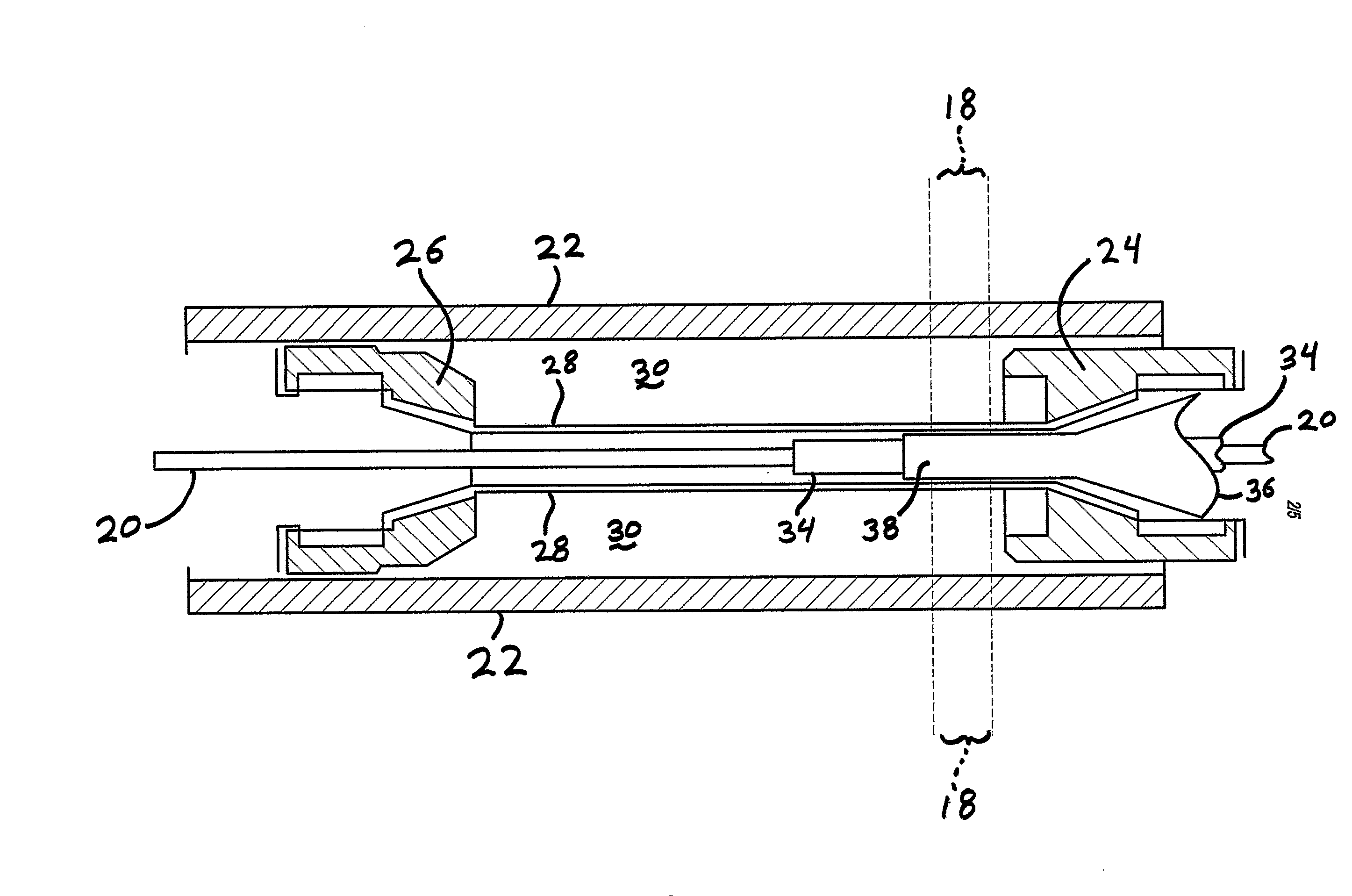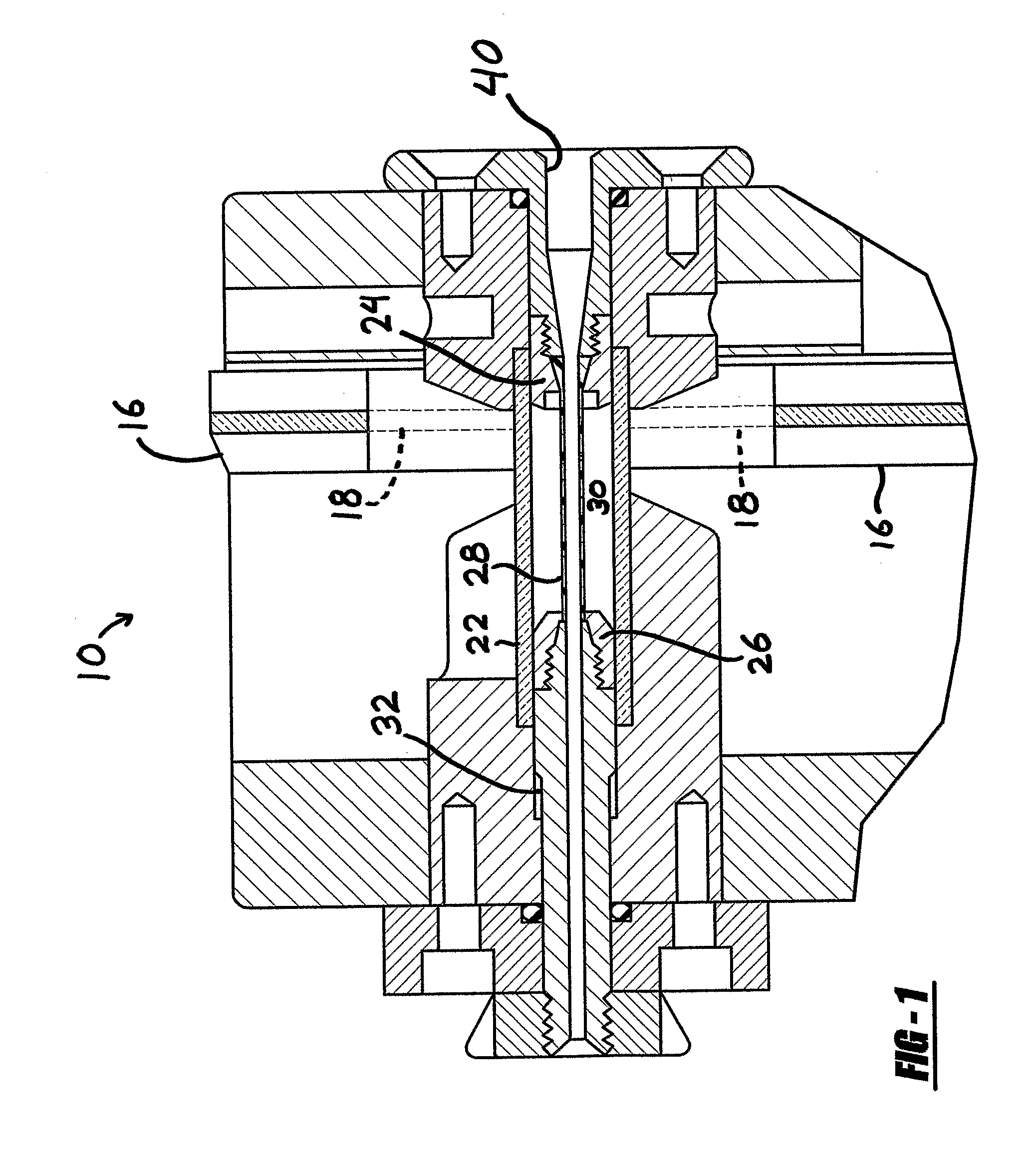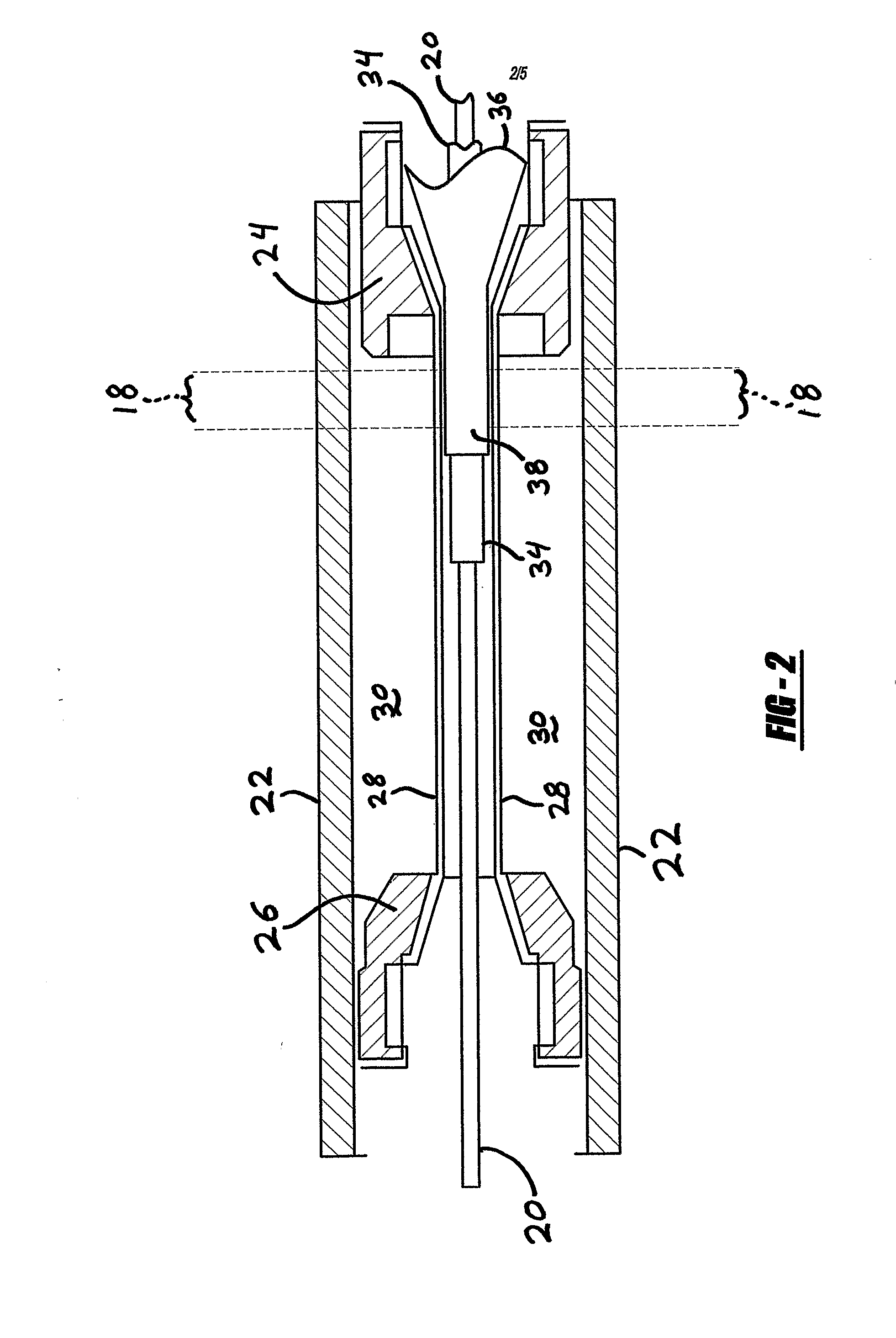Systems and Methods for Laser Bonding Catheter Components
a technology of laser bonding and catheter components, applied in the field of medical devices, can solve the problems of limiting the types and varieties of materials, adding undesirable costs to the construction of medical devices, and difficult to remove shrink tubing from catheter components
- Summary
- Abstract
- Description
- Claims
- Application Information
AI Technical Summary
Benefits of technology
Problems solved by technology
Method used
Image
Examples
Embodiment Construction
[0026]The following description of the preferred embodiments of the present invention is merely illustrative in nature, and as such it does not limit in any way the present invention, its application, or uses. Numerous modifications may be made by those skilled in the art without departing from the true spirit and scope of the invention.
[0027]According to one example of the present invention, a system 10 for laser bonding two or more catheter components is depicted in the drawings. The system 10 includes a laser generator 12, an optical fiber 14 or other element for transmitting the laser energy, and one or more emitters 16 for emitting the laser energy directed toward the catheter components to be bonded. A laser beam 18 is indicated with dashed lines. The system 10 may also include a mandrel 20 for supporting the catheter components.
[0028]A pressure chamber is defined by a tubular outer wall 22, a first and second end assembly 24 and 26, and a flexible compression tube 28. Togethe...
PUM
| Property | Measurement | Unit |
|---|---|---|
| angle | aaaaa | aaaaa |
| specific wavelength | aaaaa | aaaaa |
| pressure | aaaaa | aaaaa |
Abstract
Description
Claims
Application Information
 Login to View More
Login to View More - R&D
- Intellectual Property
- Life Sciences
- Materials
- Tech Scout
- Unparalleled Data Quality
- Higher Quality Content
- 60% Fewer Hallucinations
Browse by: Latest US Patents, China's latest patents, Technical Efficacy Thesaurus, Application Domain, Technology Topic, Popular Technical Reports.
© 2025 PatSnap. All rights reserved.Legal|Privacy policy|Modern Slavery Act Transparency Statement|Sitemap|About US| Contact US: help@patsnap.com



